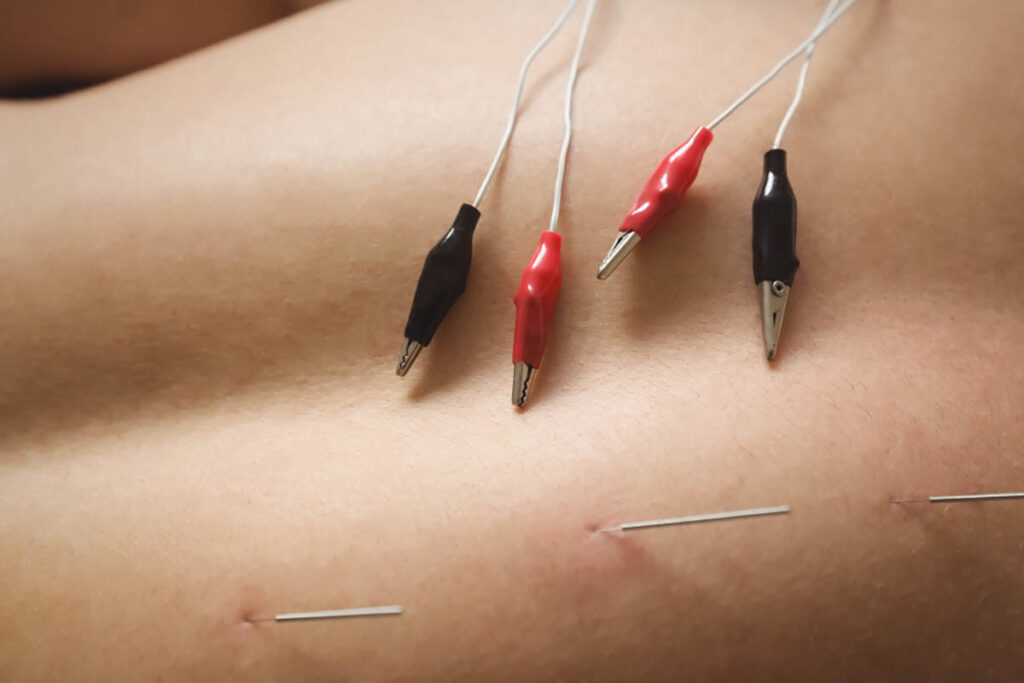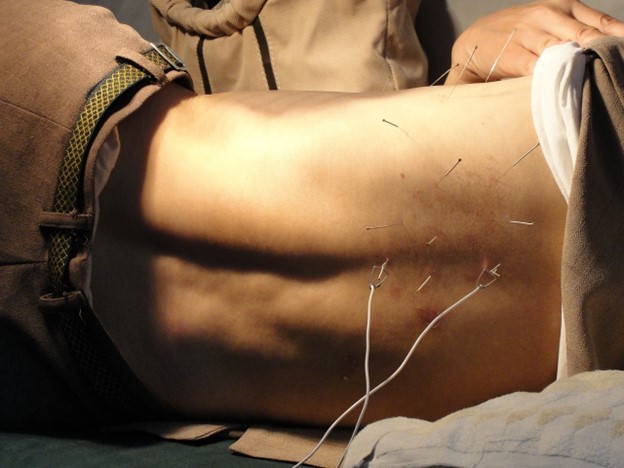By Luke Greenwell, PT, DPT, CSMT, CSCS
Physical therapists are continually seeking new methods to treat patients with chronic pelvic pain and issues associated with pelvic floor muscles. The emergence of dry needling pelvic floor associated muscles has been a significant breakthrough. It has opened up new avenues for addressing the complex and often frustrating problems tied to pelvic floor dysfunction, enabling more targeted and effective interventions.
Introduction
Dry needling’s novel approach offers new possibilities for those suffering from pelvic floor disorders, including chronic pain and dysfunction. We’ll explore what dry needling is, its effectiveness, scientific backing, and the benefits of using dry needling for pelvic floor pain. Let’s have a look.
What is Dry Needling?

Dry needling is a therapeutic technique involving the use of thin needles inserted into specific muscles or tissues. Unlike acupuncture, dry needling focuses on trigger points and aims to release tension, reduce pain, and improve function. Dry needling for pelvic floor conditions targets muscles in the pelvic region that may be contributing to various disorders, offering relief and rehabilitation for patients.
How effective is dry needling treatment?
Dry needling has been found effective in reducing pelvic floor pain and improving functionality. The immediate effect often involves a reduction in muscle tension, allowing for greater mobility. Regular treatments with pelvic floor dry needling can lead to long-term improvements, especially when combined with other physical therapy services modalities like exercises and massage. Recover RX physical therapy service can provide this technique as part of a comprehensive treatment plan.
Besides targeting painful trigger points, dry needling can be combined with electrical stimulation to enhance muscle function. This complementary approach maximizes the therapeutic impact, relieving chronic pain and dysfunction in the pelvic floor muscles more effectively. By integrating these methods, physical therapists can craft a highly individualized treatment plan that addresses each patient’s unique needs and goals.
Is there scientific evidence for dry needling?
Yes, there is growing scientific support for dry needling. Studies have shown that this method can effectively treat various musculoskeletal issues, including those affecting the pelvic region. Research from reputable institutions such as the National Institutes of Health and Mayo Clinic underscore the potential benefits of dry needling for pelvic floor conditions.
Benefits of Dry Needling for Pelvic Floor

Dry needling for pelvic floor disorders offers several benefits. It can target specific muscles causing pain or dysfunction, providing targeted relief. Additionally, this therapy can be used in conjunction with other treatments such as pelvic rehabilitation, enabling a multifaceted approach. Individuals who undergo dry needling for pelvic floor pain often report a significant improvement in their symptoms and overall well-being.
Effectiveness and Research
The effectiveness of dry needling for pelvic floor therapy is supported by research and clinical practice. Studies conducted by universities and governmental agencies such as the National Center for Biotechnical Information have highlighted the benefits of this technique in treating pelvic floor issues. Continuous research is essential to understand further and refine the application of dry needling in pelvic floor treatment.
Safety Considerations
While dry needling is generally considered safe, finding a qualified and experienced practitioner is crucial. Proper training and adherence to safety guidelines can minimize risks. Side effects may include minor discomfort at the needle site, but serious complications are rare. When considering dry needling for pelvic floor disorders, always consult a professional experienced in this technique.
Finding the Right Treatment

Choosing the right treatment for pelvic floor disorders requires a personalized approach. Dry needling may be one component of a broader plan that includes exercises, lifestyle changes, and other therapies. Consulting with a trained physical therapist who offers dry needling pelvic floor treatments is the best way to determine the most suitable plan for your needs.
Finding a qualified practitioner who understands the complexities of pelvic floor dysfunction is essential for successful treatment. At Recover RX, our team of skilled therapists specializes in various therapeutic techniques, including dry needling, to tailor a rehabilitation program specifically for you. Our holistic approach ensures that you receive the best care possible, addressing symptoms and the underlying causes of your condition.
From Pain to Progress: The Last Word
The use of dry needling in treating pelvic floor disorders represents a promising healthcare advancement. With proper application, it can provide effective relief for many individuals. As with any medical treatment, working with trained professionals who can tailor a therapy plan to your unique situation is essential. By integrating dry needling with other therapeutic methods, patients can look forward to improved pelvic health and a better quality of life.
Trigger point dry needling is integral to this innovative approach. Physical therapists can provide targeted relief by focusing on specific trigger points within the pelvic floor muscles. This precise treatment can improve chronic pelvic pain, enhancing patient well-being and daily functioning. More and more healthcare professionals are recognizing the value of this technique, making it a noteworthy development in pelvic floor treatment.
Are you struggling with pelvic floor pain or other related conditions? Seek expert care with Recover RX. Our team of skilled physical therapists is experienced in dry needling and other state-of-the-art treatments to help you regain control over your life. Don’t let pelvic floor issues hold you back; contact us today to explore the therapeutic options tailored to your needs at Recover RX.




